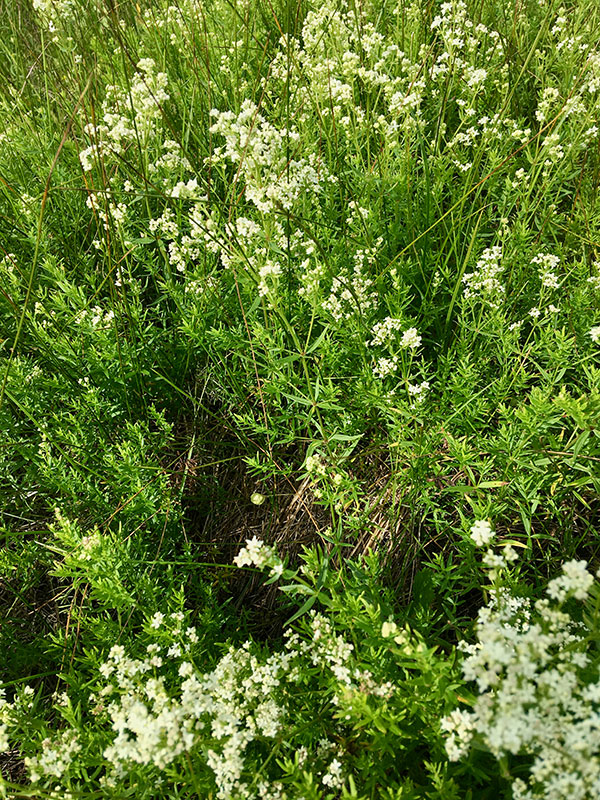Galium borealis / northern bedstraw
- teeny 4-petaled white flowers in small to large clusters
- two pairs of opposite leaves in a whorl around the stem
- linear leaves – like rosemary
- smooth stems… not hairy or sticky like other bedstraws
Synonym: G. septentrionale
See also: Galium triflorum / fragrant bedstraw
Northern bedstraw is an herbaceous perennial, dying back each fall. In trying to label your “specimen” as this species, the one feature to pay closest attention to, perhaps, is that the teeny white flowers each have four (4) – count ’em – four petals. The petals fold back from a fused tube enclosing the stamens and pistil… but you are unlikely to see this with a cell phone. The flowers appear in fairly showy clusters – panicles – at the tops of the stems. Despite all the flowers, most are sterile and those that are fertile are self-incompatible, meaning that outcrossing is essential for seed production. Together, these make propagation by seed less important than the size of the inflorescence would suggest.
The stems are square-ish and the leaves come in whorled groups of four, attached directly to the stems (no petioles). That’s the second thing to look for. They are linear, an inch or so long, and remind me of rosemary leaves, but without the scent. One of the opposite pairs is distinctly shorter than the other, and the whorls are spaced at wide (-ish) intervals along the stem, i.e. the internodes are long. Unlike other bedstraws, this one remains erect rather than falling over.
There are many species of Galium, most of which have hooks on the stems and leaves, making the plants “sticky”. Northern bedstraw, however, lacks these.
Below ground, northern bedstraw is rhizomatous and this is the primary way in which it spreads. Even large stands can be clones, i.e. the same genetic individual. A perhaps unfortunate consequence of this is that sizable, thick clumps of northern bedstraw can smother out other species.
Northern bedstraw is found mostly in wet places… moist meadows, shorelines, stream banks, but also on forest edges, and rocky slopes.
Galium, as a word, comes from the Greek for milk (as in “galaxy”/milky way). Apparently, when cattle eat it, their milk curdles. The common name, bedstraw, does indeed seem to have history as well. It seems that a related species, Galium verum (Lady’s bedstraw) was actually used to stuff mattresses. It has a pleasant “hay” scent and repels fleas.
| Color | |
|---|---|
| Family | |
| Blossom size | |
| Inflorescence size | |
| Inflorescence type | |
| When? | |
| Where? |



